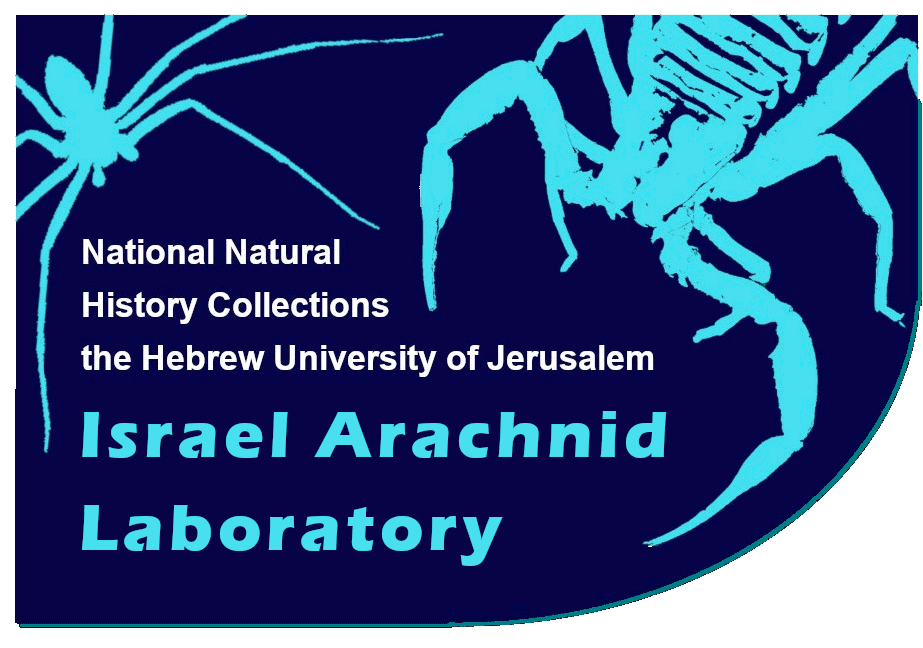Ornithodoros tholozani Laboulbène & Mégnin, 1882
Ornithodoros tholozani is a species of soft tick (Family Argasidae) found in southwestern and central Asia, mainly in Mediterranean, steppe and mild (but not extreme) desert climates. In the western part of its range, this tick is mainly found in dry caves and similar artificial caverns. In the eastern part, it is found mostly in animal sheds.
The tick can bury itself n the soil and wait for prolonged periods (up to several years) between meals. It is active throughout the year, and can be attracted to hosts from a distance of about 30 meters. Feeding time lasts up to half an hour, in the end of which, the tick returns into the soil. The host is usually a rodent, but O. tholozani can feed on other mammals, including humans.
Ornithodoros tholozani is a carrier of Borrelia persica, a bacterium causing Tick-borne relapsing fever (TBRF) in humans. Rarely it can also carry Coxiella burnetii, which causes Q fever.
photo by: Shlomi Aharon

Approximate distribution of Ornithodoros tholozani
Accession in GENBANK:
Articles about Ornithodoros tholozani:
Andreev, L. A. (1944). Tick-borne Relapsing Fever in Kazakhstan. Meditsinskaya Parazitologiya i Parazitarnye Bolezni, 13(3), 53-7.
Davis, G. E., & Hoogstraal, H. (1956). A Study of the Biology of the Spirochaete Borrelia persica, found in the Tick Ornithodorus tholozani collected in the" Governorate" of the Western Egyptian Desert; Notes on the Distribution and Ecology of the Tick Vector. Annales de Parasitologie Humaine et Comparee, 31(1/2), 147-154.
Fen, C. T. (1958). The study of the vectors of tick-borne relapsing fever in China. Doklady Akademii nauk SSSR, 121(4).
photo by: Shlomi Aharon
Taxonomic Classification
Class: Arachnida
Order: Ixodida
Family: Argasidae
Genus: Ornithodoros
Species: Ornithodoros tholozani
Authors: Laboulbène & Mégnin, 1882
Ecological Classification
Category: Troglophile
Cave zone: Entrance, twilight
Microhabitat: On floor
Hoogstraal, H., & Kaiser, M. N. (1960). Observations on ticks (Ixodoidea) of Libya. Annals of the Entomological Society of America, 53(4), 445-457.
Estrada-Peña, A., Mihalca, A. D., & Petney, T. N. (Eds.). (2018). Ticks of Europe and North Africa: a guide to species identification. Springer.
Moradis-Asl, E., & Jafari, S. (2020). The habitat suitability model for the potential distribution of Ornithodoros tholozani (Laboulbène et Mégnin, 1882) and Ornithodoros lahorensis (Neumann, 1908)(Acari: Argasidae): the main vectors of tick-borne relapsing fever in Iran. Annals of parasitology, 66(3).
DOI: 10.17420/ap6603.274
Abdelbaset, A. E., Nonaka, N., & Nakao, R. (2022). Tick-borne diseases in Egypt: A one health perspective. One Health, 100443.
DOI: 10.1016/j.onehlt.2022.100443
Abid, A., Numan, M., Khan, M., Aiman, O., Muñoz-Leal, S., Chitimia-Dobler, L., Marcelo, B. L. & Nijhof, A. M. (2022). Ornithodoros (Pavlovskyella) ticks associated with a Rickettsia sp. in Pakistan. Parasites & Vectors, 15, 1.
DOI: 10.1186/s13071-022-05248-0
Billiet, A., Vanderschueren, S., Lagrou, K., Pilate, T., Fournier, P. E., Luciani, L., & Henckaerts, L. (2022). Tick borne relapsing fever after travelling to a Greek island. Journal of Travel Medicine, 29(2), taab073.
DOI: 10.1093/jtm/taab073
Chen, Z., & Liu, J. (2022). A review of argasid ticks and associated pathogens of China. Frontiers in Veterinary Science, 9, 865664.




